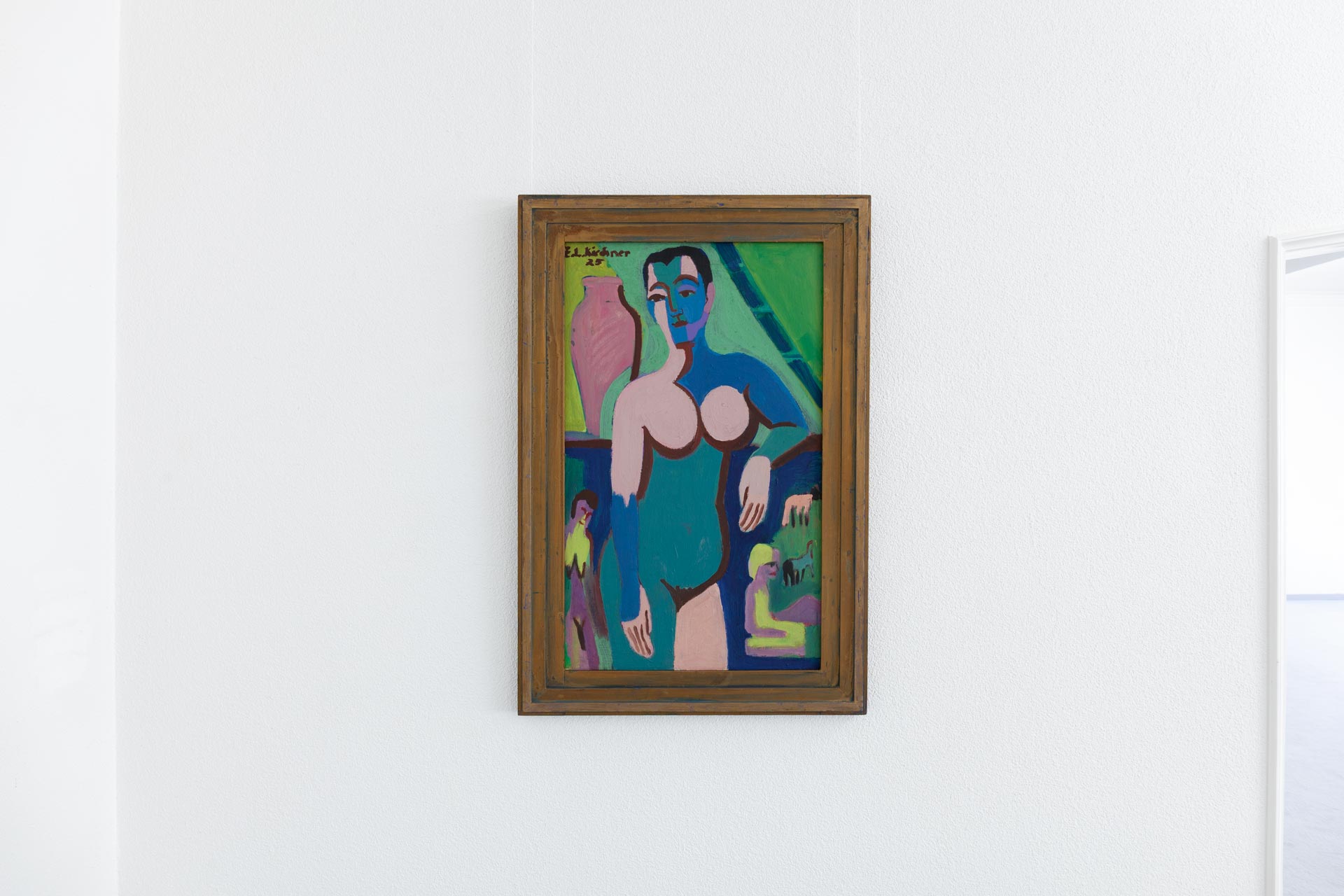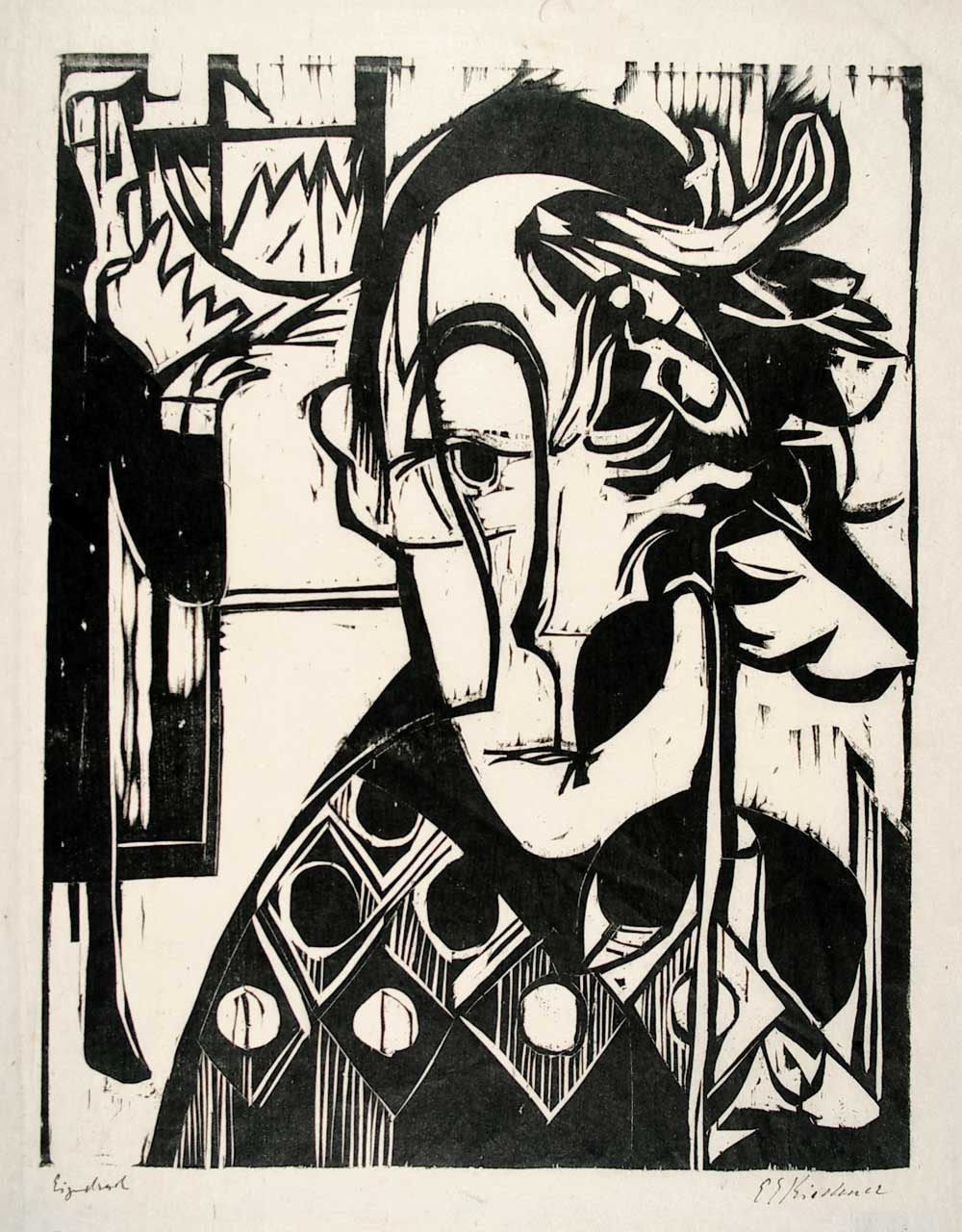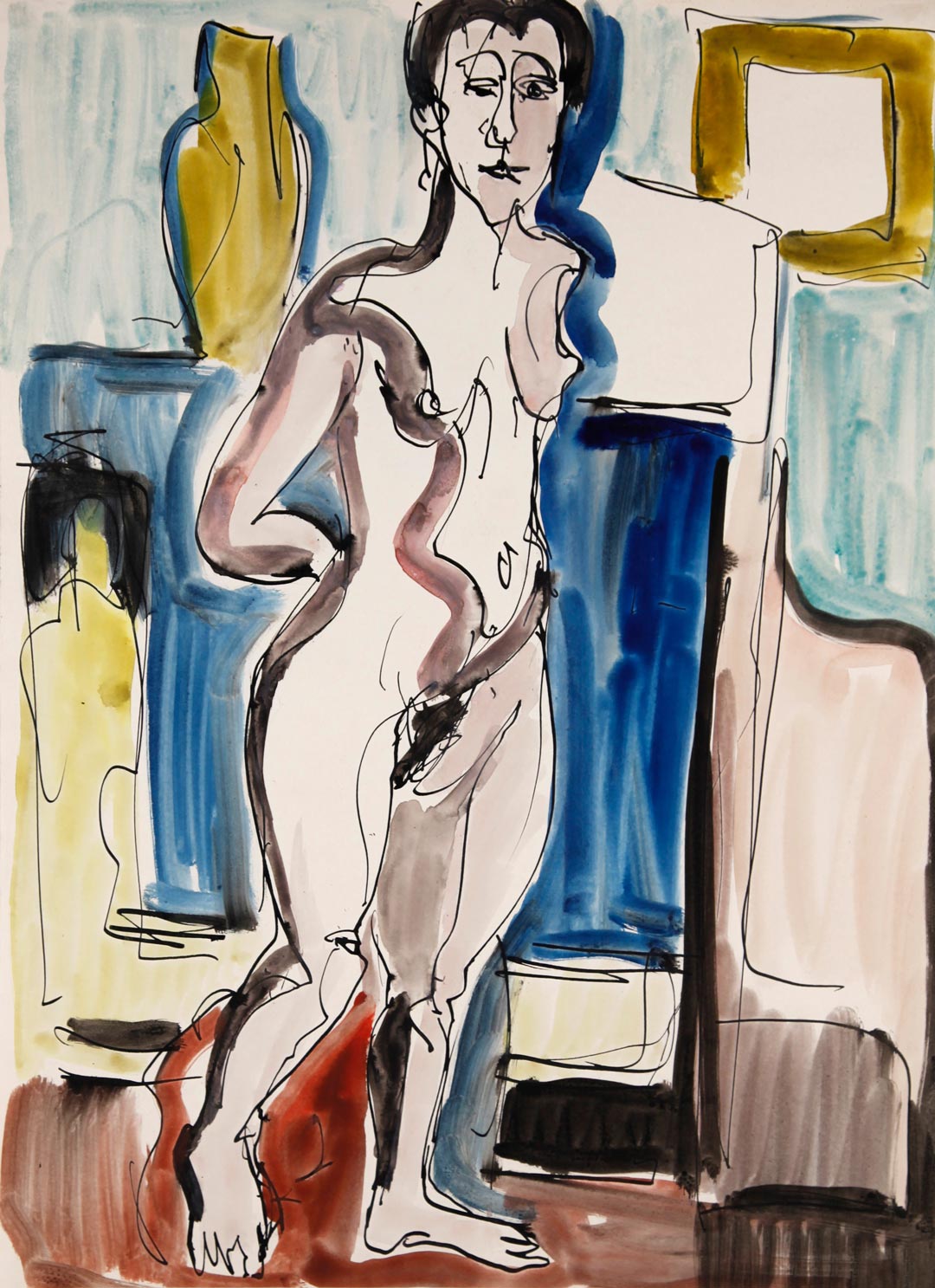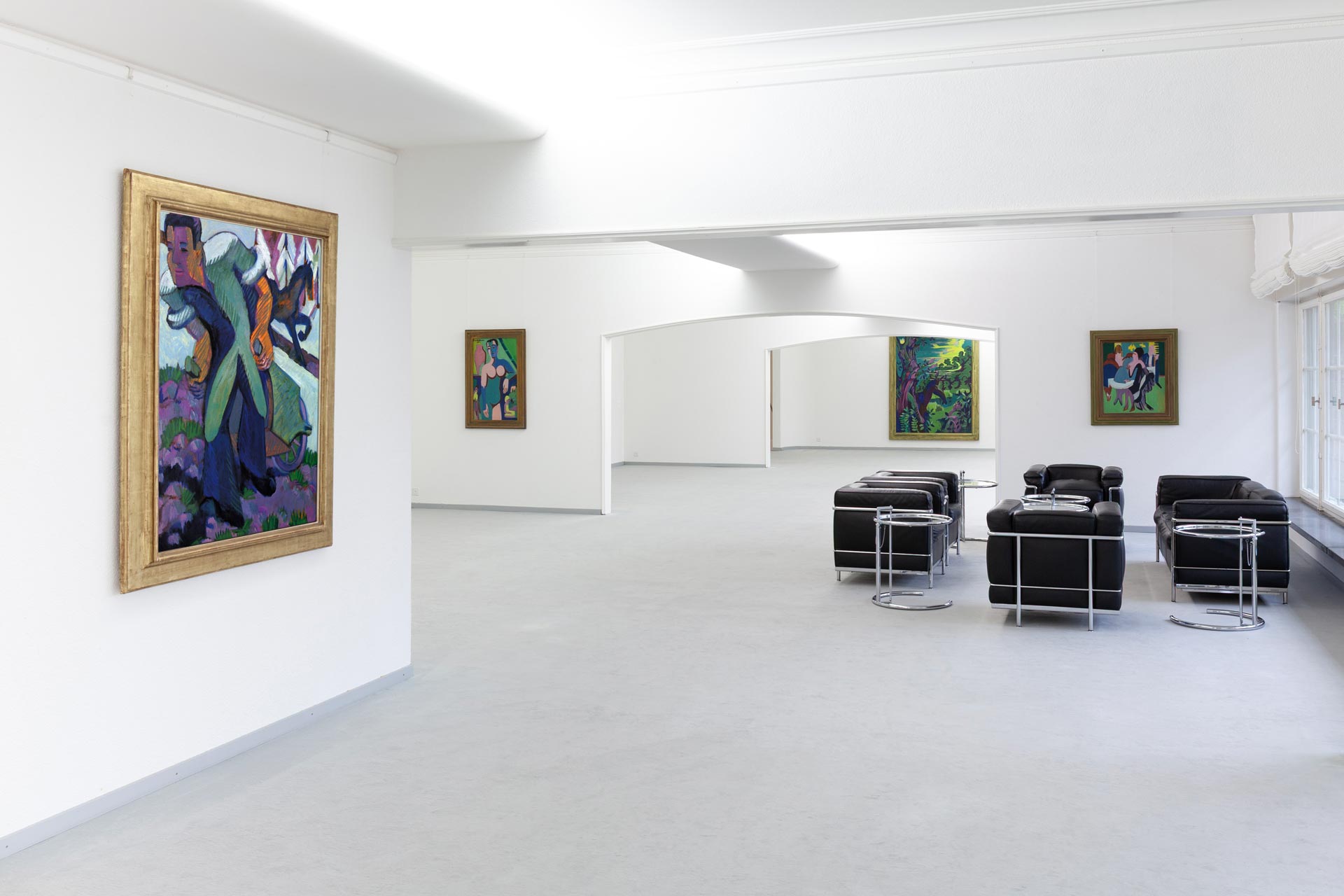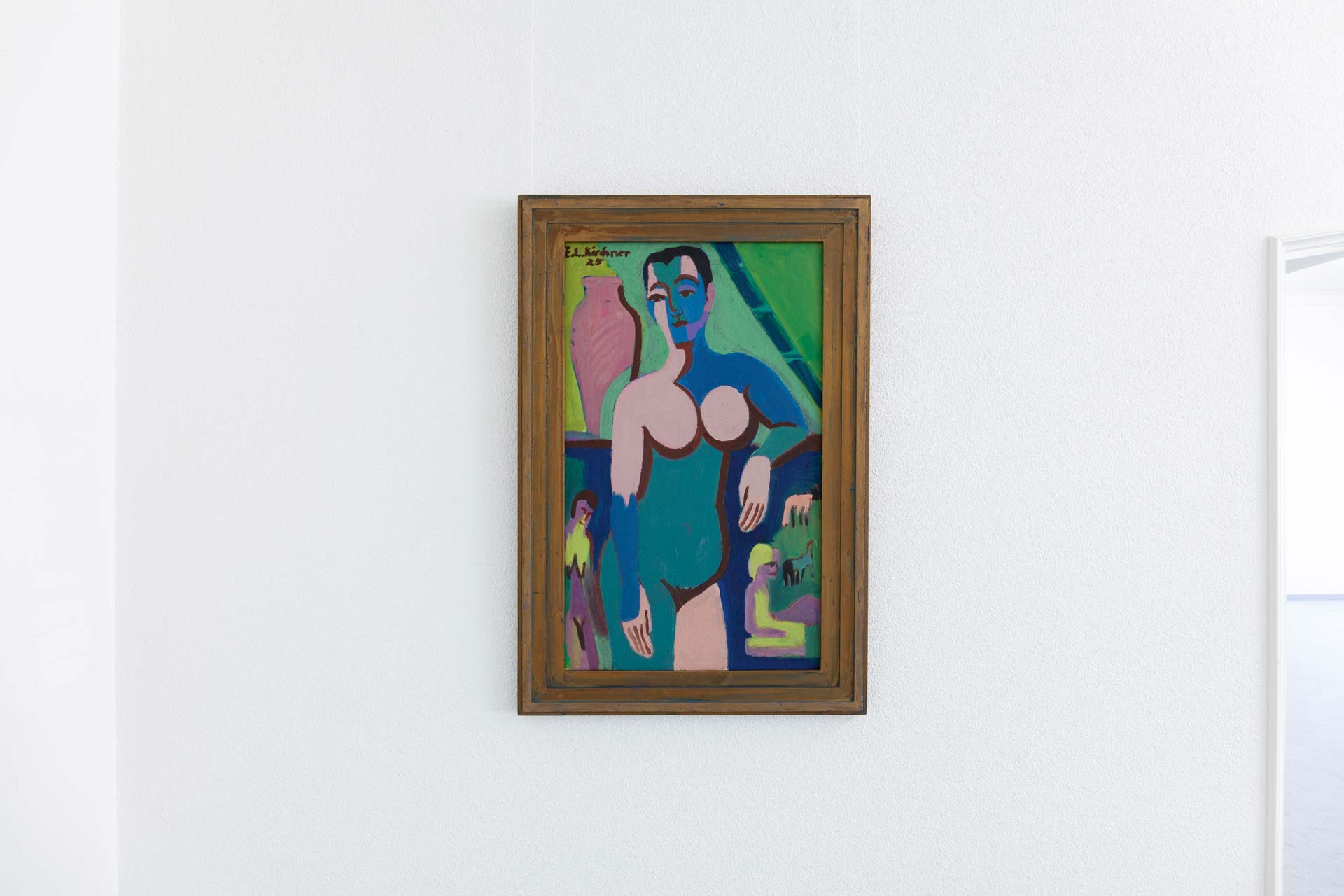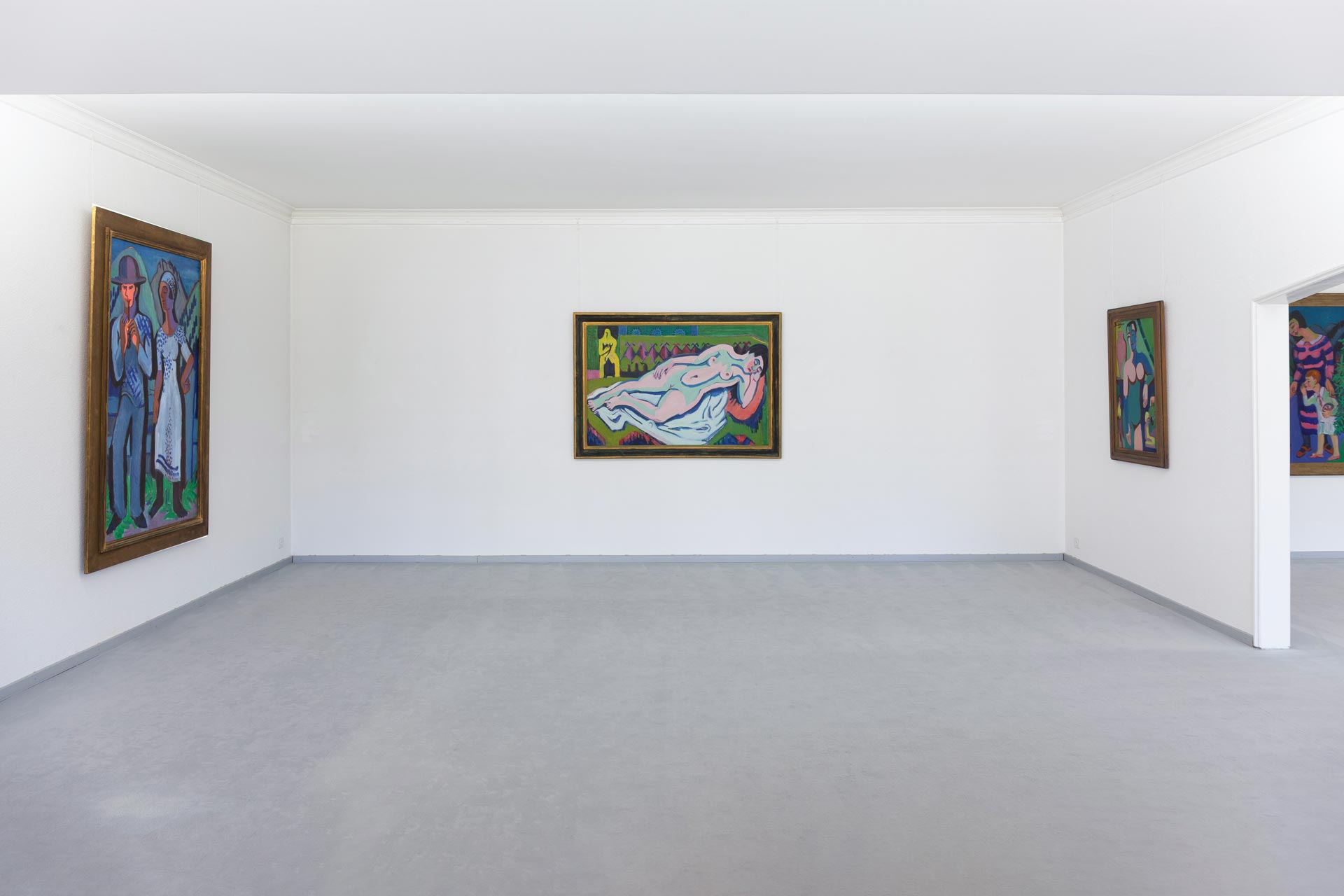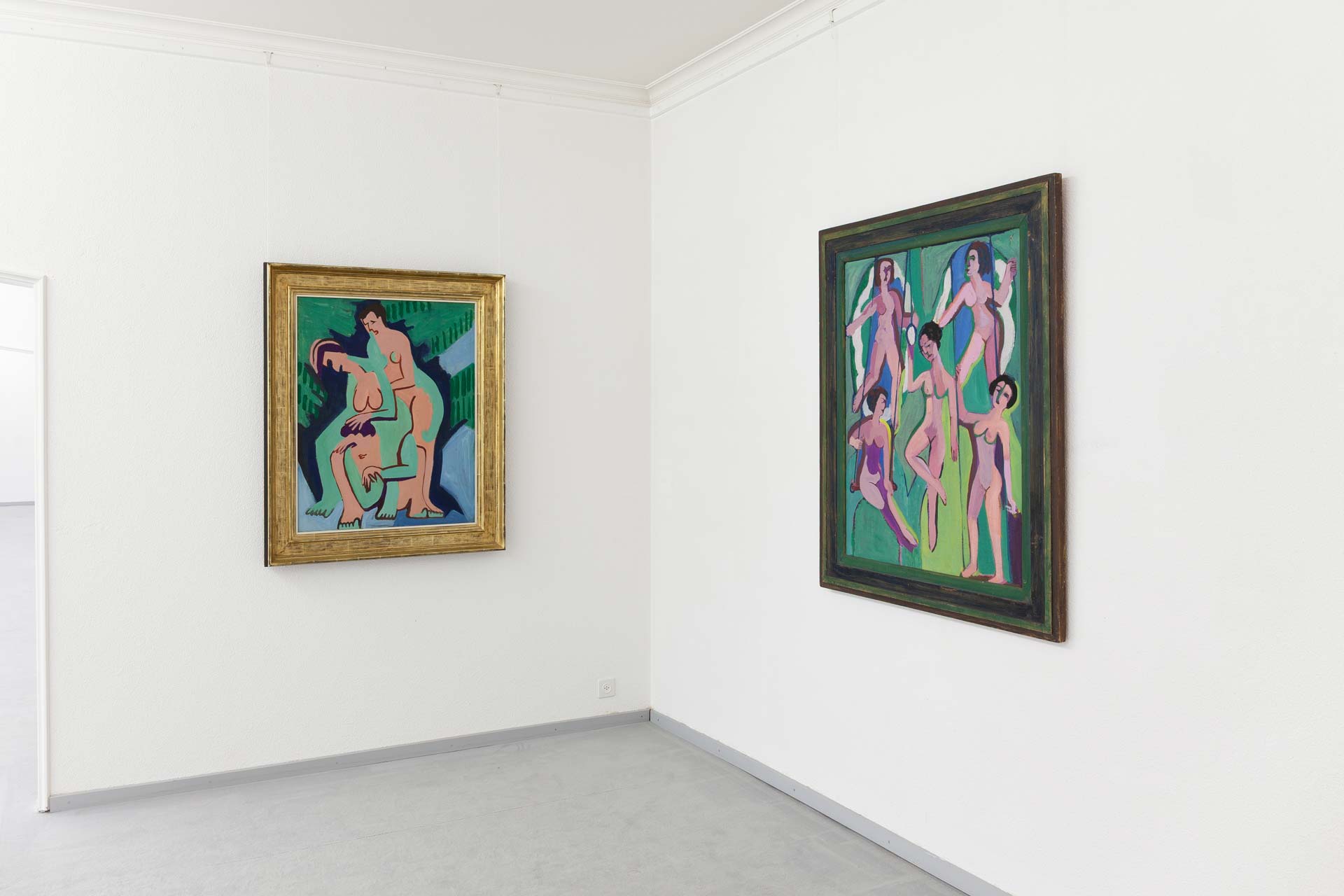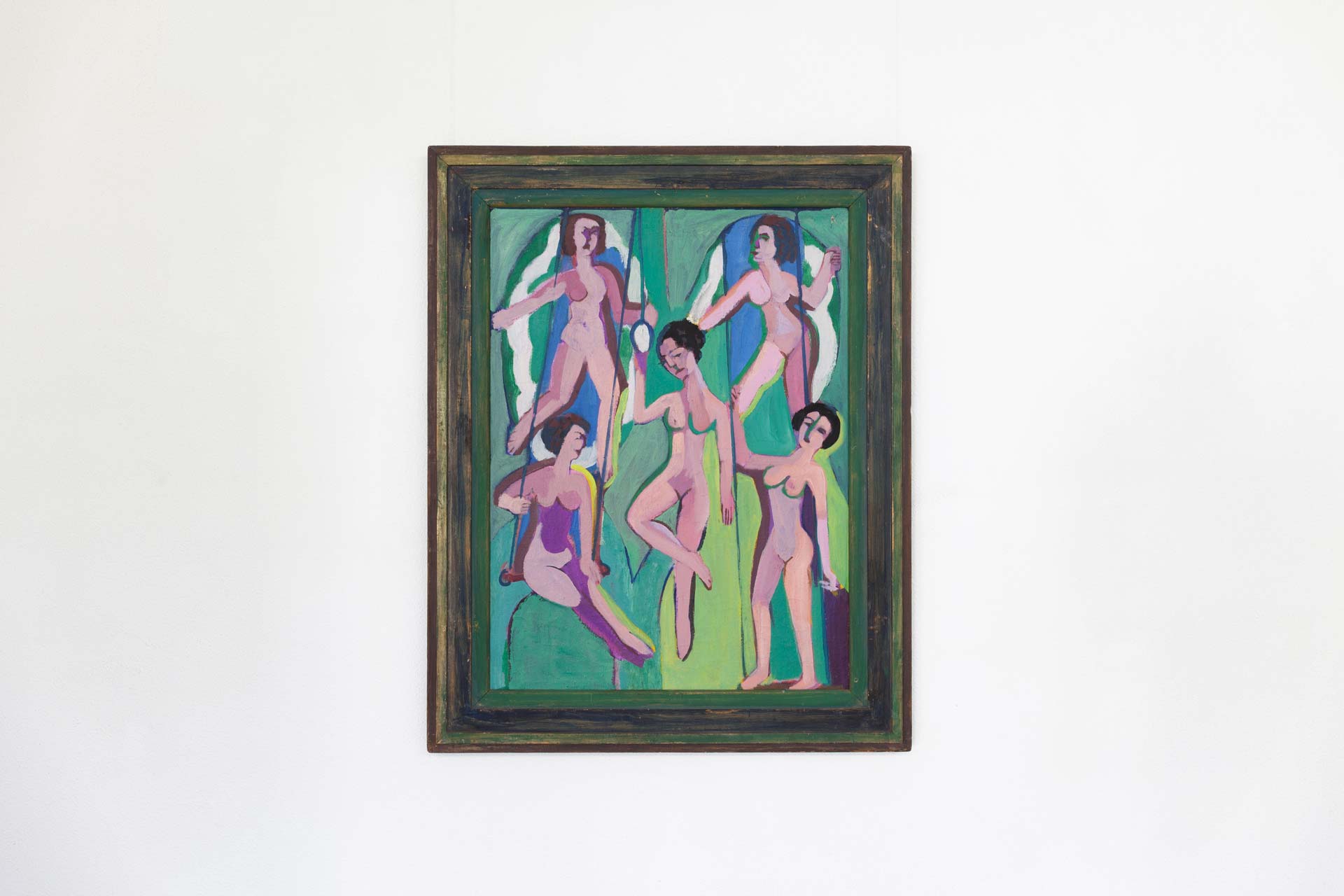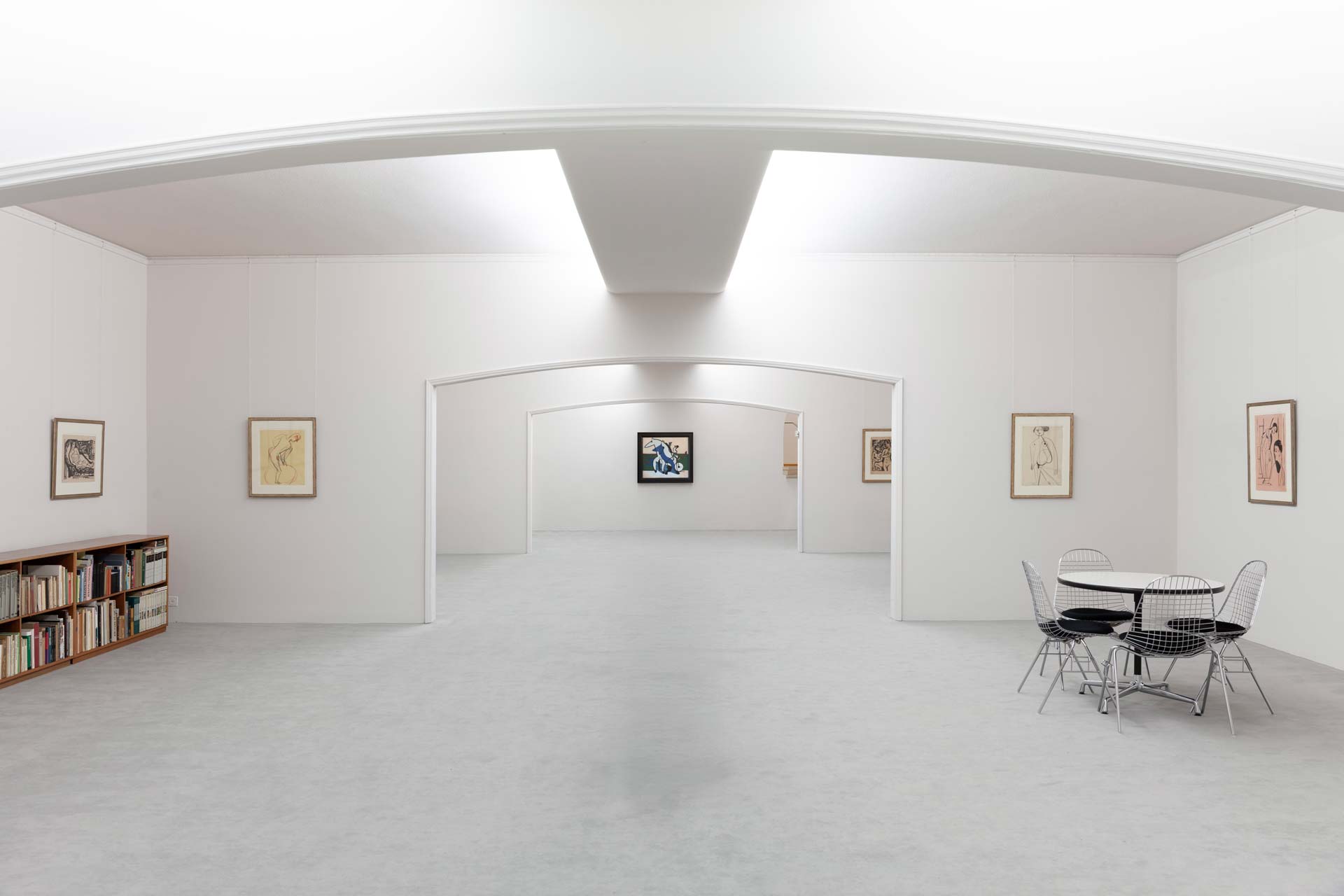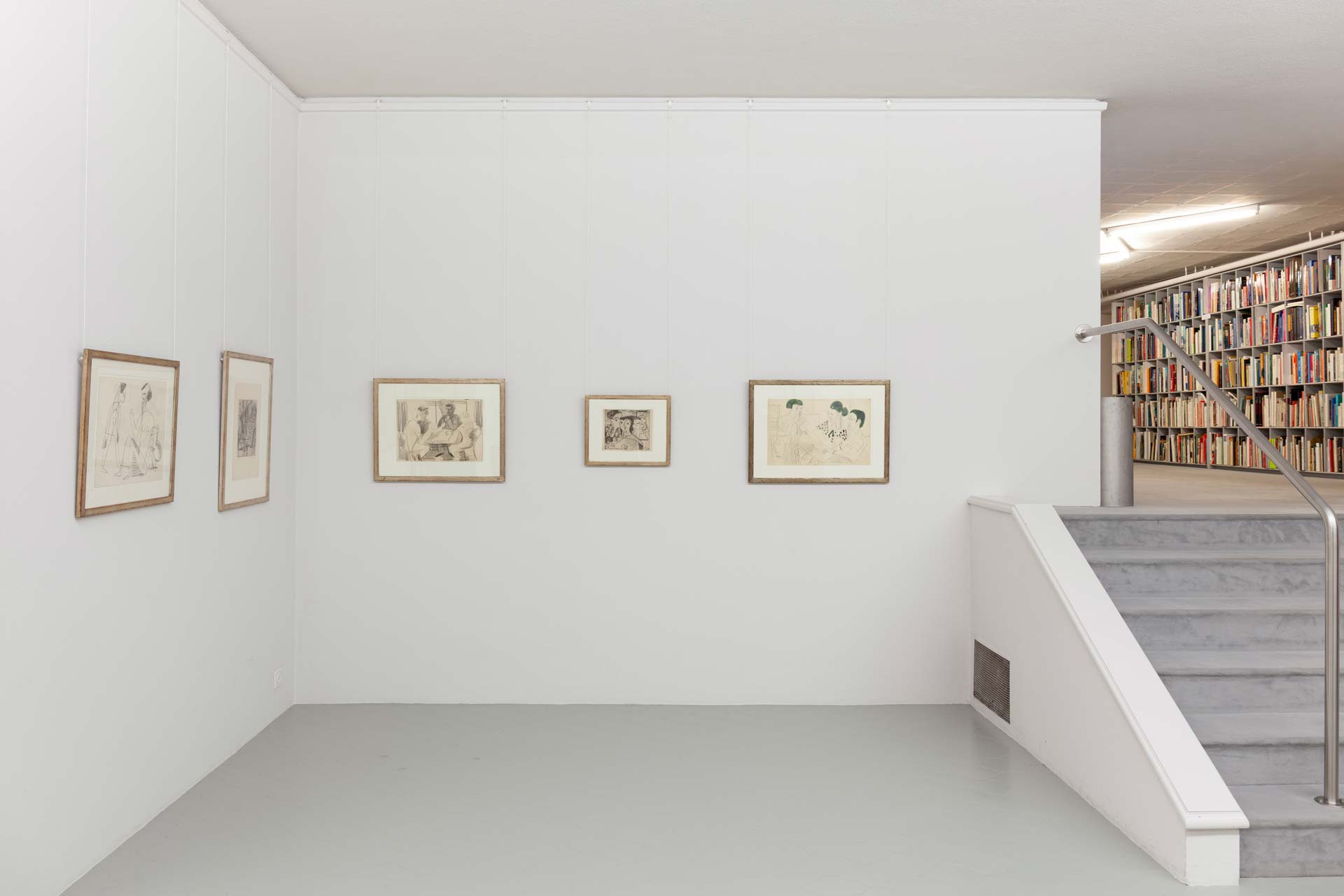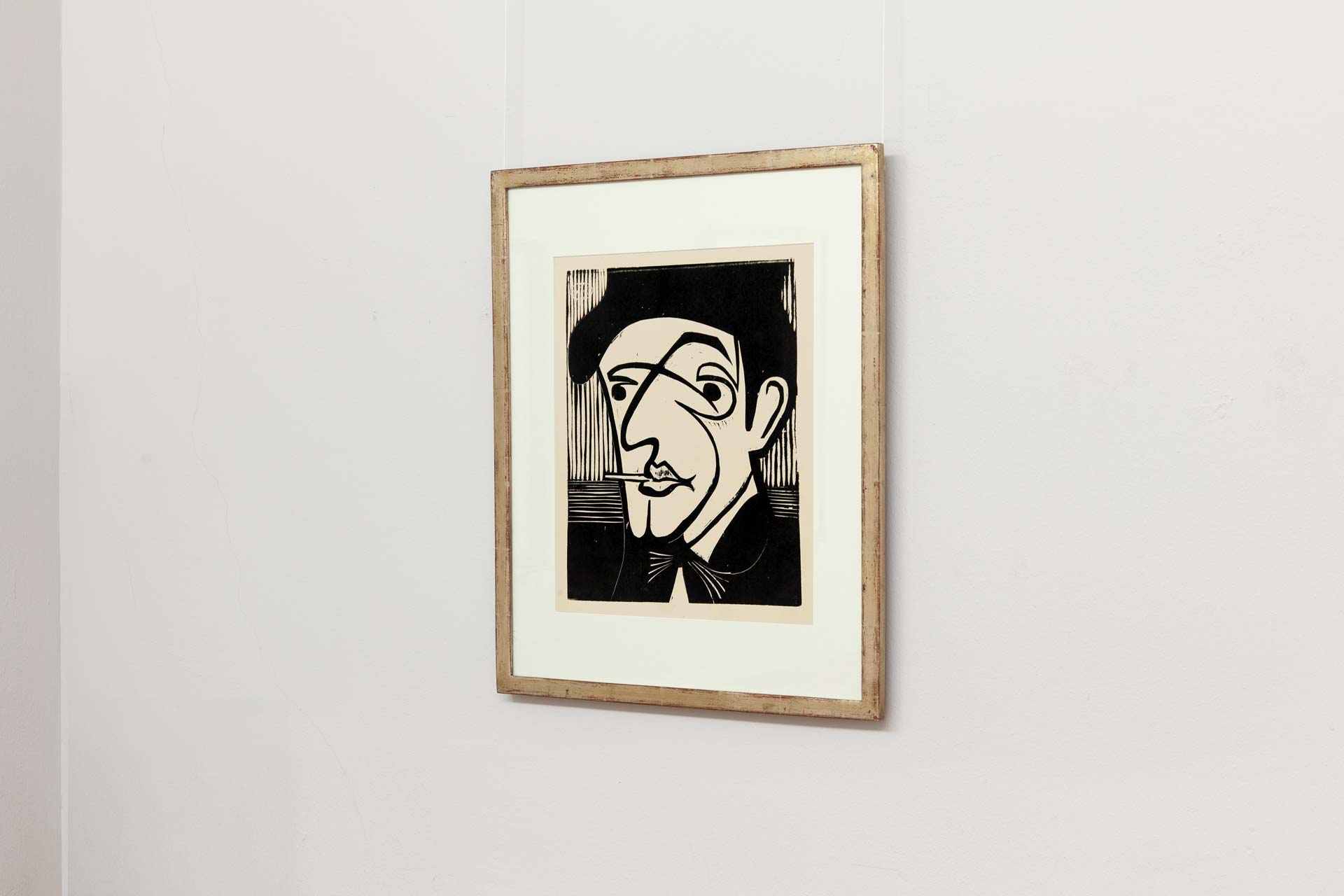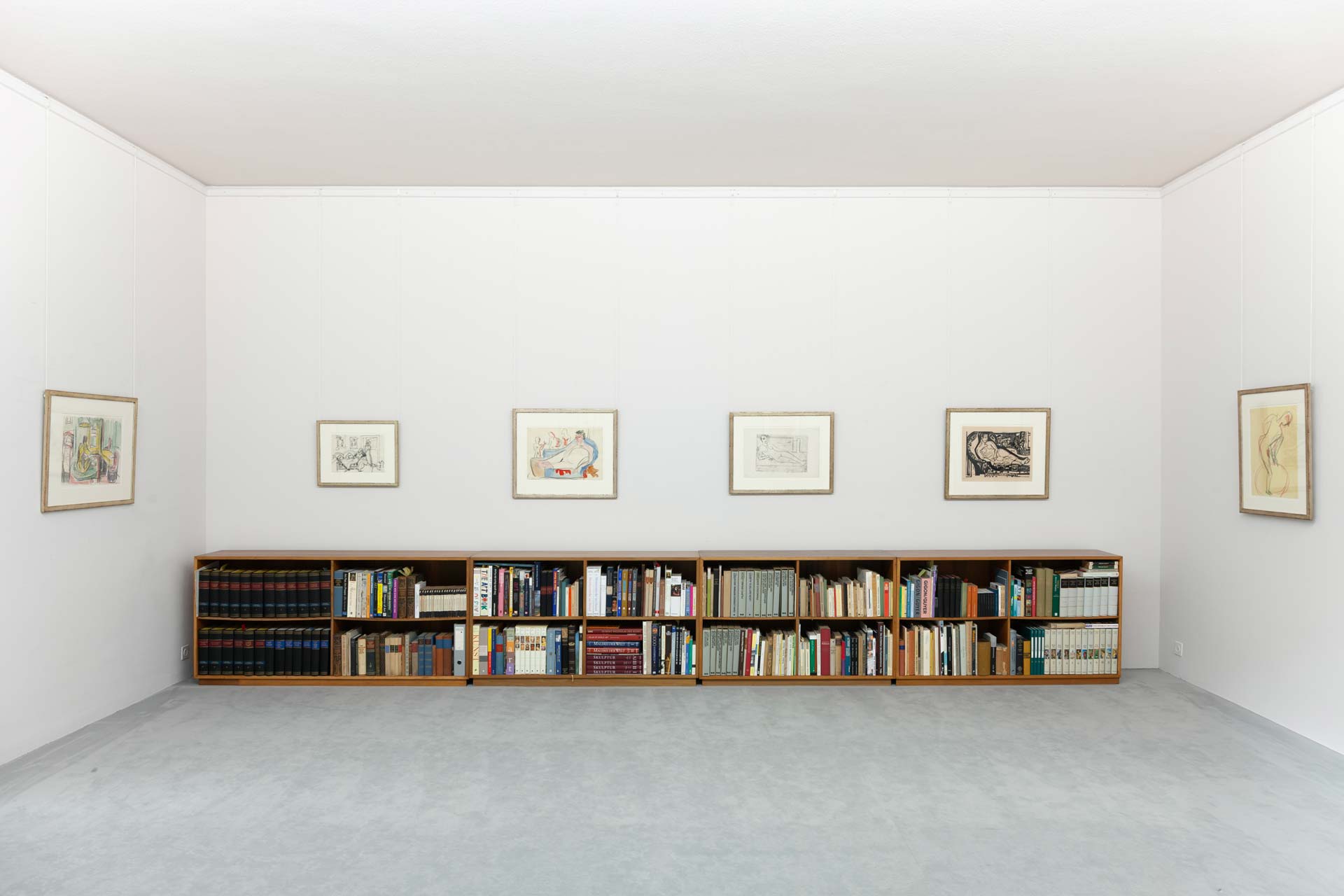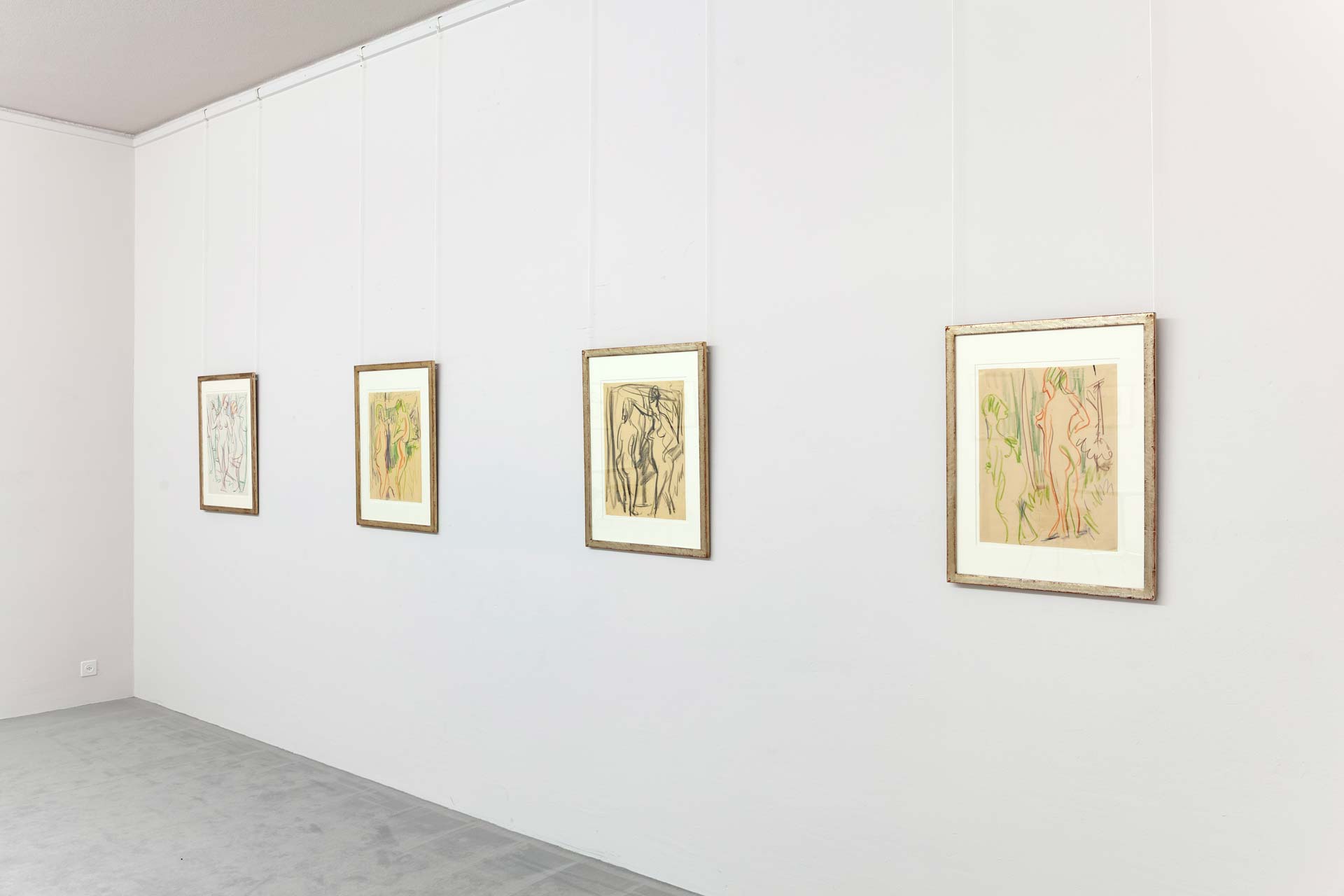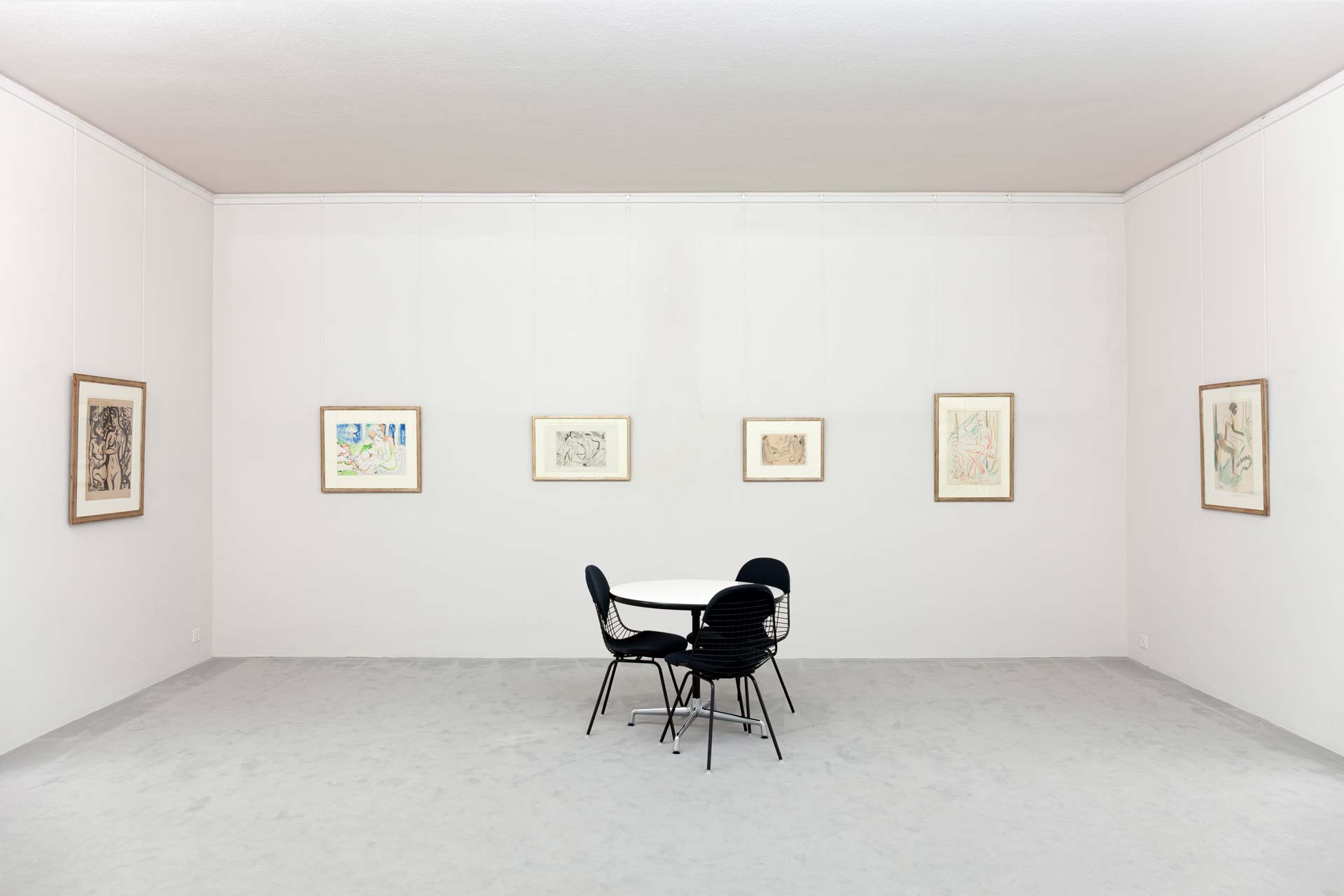The exhibition is dedicated to Ernst Ludwig Kirchner's works of the so-called "New Style" - a creative phase that the artist developed from the mid-1920s and continued into the mid-1930s. A concise exhibition unfolds over two floors, using selected paintings on the first floor and works on paper in the basement to illustrate the characteristic features, developments and peculiarities of this "New Style". The aim is to give this phase within Kirchner's oeuvre the status it deserves.
With this exhibition, our gallery is also making a contribution to the current intensive debate on Kirchner's work and the New Style - as is prominently reflected in the current presentations at the Kunst Museum Bern (Kirchner x Kirchner), the LWL-Museum für Kunst und Kultur in Münster (Kirchner and Picasso), the Kunsthalle Mannheim (Kirchner, Lehmbruck, Nolde) and the Kirchner Museum Davos.
Ernst Ludwig Kirchner came to Davos for the first time in 1917 for reasons of convalescence and found his new source of inspiration in the mountains surrounding the Alpine town. He brought with him stylistic features from his artistic time in Berlin and reinterpreted them, creating masterpieces of landscape depiction in his typically nervous painting style with angular hatching and pronounced color contrasts. The Berlin coquettes, who enlivened his famous street scenes, slipped into the roles of mountain peasant women, the Berlin suitors into those of peasants at work. After Giovanni Giacometti, Giovanni Segantini and Ferdinand Hodler, the metropolitan painter developed into one of the most important interpreters of Alpine vedute: mountains, farmers and cows were sublimated in his works to become central, celebrated and excellently staged motifs. The tranquillity and seclusion that Kirchner found in and around Davos helped him to achieve a new flowering of expressionist expressiveness with equal force and intensity.
Ernst Ludwig Kirchner would not have been a master of painting, drawing, graphic art, sculpture and photography, however, if he had not developed further and thus reinterpreted the majesty of his early Davos period for a change in style, which led Kirchner to his "New Style", which we would like to present in more detail in this exhibition. The artist had already been living on the outskirts of the Alpine town for several years and had captured his surroundings and life at high altitude from all sides and in all facets when this change of style in his painting came about: The color surfaces calmed down, they became more homogeneous and were captured by intertwined, alternating concave and convex lines, so that broad rounded forms alternated in strong color contrasts, creating a monumental painting.
Kirchner remained true to his motifs throughout his life and from his early beginnings in Dresden, through his Berlin years, the early Davos period and the New Style to the late Davos period, he manically and repeatedly created bathers and nudes in studio surroundings or landscapes, circuses or variety shows as well as sporting activities, often with horses, fruit and flower still lifes or city and mountain landscapes. Thus, from the mid-twenties of the last century, we encounter a Kirchner who completely reinvented himself and blossomed in a new way. He worked in this new style until the mid-1930s, refining it and applying it imaginatively in all techniques. The exhibition of 17 paintings - including some rarely shown works - as well as numerous works on paper provides an impressive insight into the diversity of Kirchner's motifs and techniques and brings his "New Style" to life in all its facets.
Strictly speaking, we cannot speak of a late style here, as the artist was just in his mid-forties to mid-fifties, i.e. in the prime of his life, but also because Kirchner changed his artistic direction again at the very end. Although the works of the "New Style" were always based on a sensory impression, they nevertheless had an abstract effect and the objects in them were simplified and depicted in multiple perspectives, the very last works before his death were to become more naturalistic again. The "New Style" can therefore be seen as a completed phase that successfully demonstrates Kirchner's drive to find his very own form of expression. Kirchner sought and found his language and style, which reflected him unadulterated and made him unique in the art world. Each work from this creative period has certain characteristics that make it unmistakably recognizable as a masterpiece by the artist from this period.
Alexandra Henze

